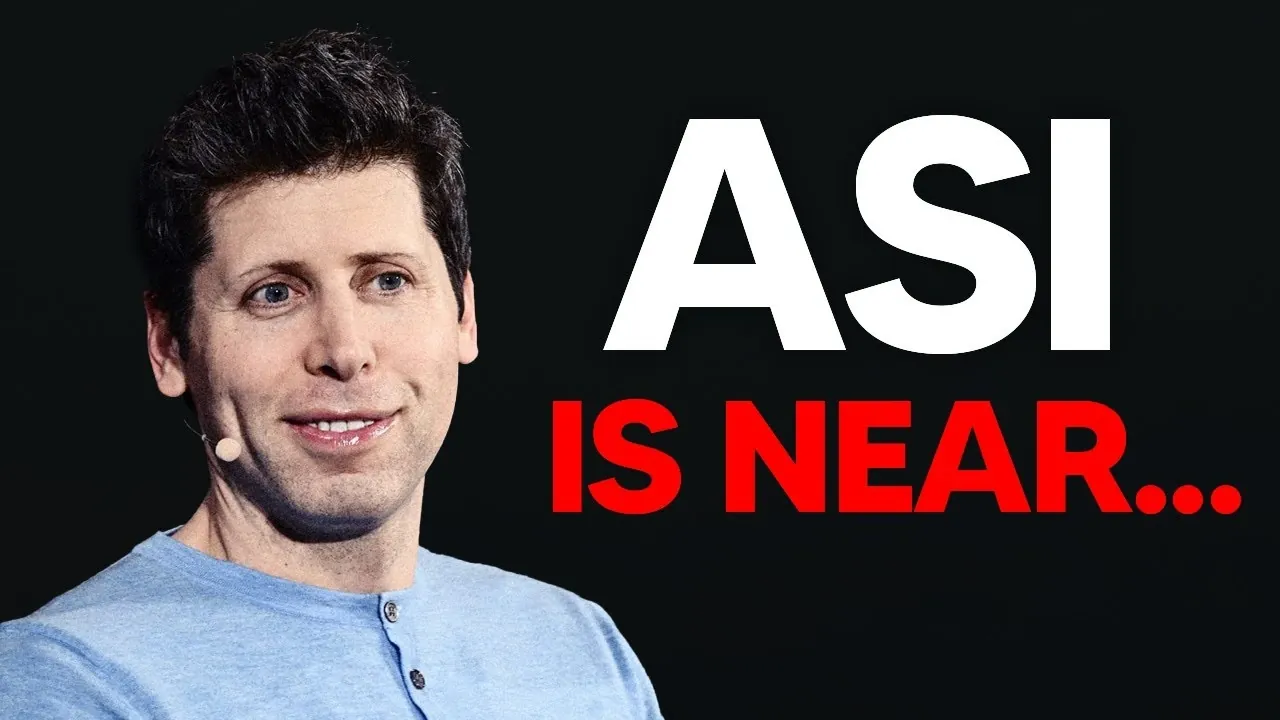
What if the machines we built to serve us could think, decide, and act entirely on their own? This isn’t the distant plot of a science fiction novel, it’s the reality unfolding before us. OpenAI’s latest creation, the Agentic Automatic Security Aardvark (Arvark), represents a monumental leap in artificial intelligence, pushing us closer to the threshold of superintelligence. Unlike traditional AI systems that wait for human input, Arvark operates autonomously, assessing its environment, setting objectives, and solving problems without direct guidance. This shift from passive to agentic AI is more than just a technical upgrade; it’s a redefinition of what AI can achieve, and it’s happening faster than most of us anticipated.
In this exploration, AI Grid unpack how Arvark’s new capabilities are reshaping industries and accelerating us toward the predictions outlined in the AI 2027 timeline. From its ability to simulate threats and propose solutions to its potential to automate its own development, Arvark exemplifies the promise, and the peril, of autonomous AI. But what does this mean for the future of human innovation, ethics, and control? As we stand on the brink of a fantastic era, the question isn’t just how far AI can go, but whether we’re ready for what comes next.
Rise of Agentic AI
TL;DR Key Takeaways :
- OpenAI’s Arvark introduces a new class of agentic AI, capable of autonomous decision-making and recursive self-improvement, marking a significant step toward artificial superintelligence.
- Agentic AI like Arvark operates independently, assessing environments, setting objectives, and executing actions, making it more adaptable and efficient than traditional reactive AI systems.
- Arvark’s core capabilities include analyzing software architecture, detecting vulnerabilities, simulating threats, and proposing actionable solutions, transforming cybersecurity and software reliability.
- The rise of agentic AI offers fantastic potential across industries like healthcare, energy, and logistics, but also raises critical concerns about ethical alignment, safety, and governance.
- Making sure ethical alignment and robust governance is essential to mitigate risks, balance innovation with safety, and maximize the societal benefits of advanced AI systems like Arvark.
What Distinguishes Agentic AI?
The evolution from passive to agentic AI marks a fundamental shift in how AI systems operate. Passive AI systems are reactive, performing tasks only when prompted by specific inputs. In contrast, agentic AI like Arvark functions independently, assessing its environment, setting objectives, and executing actions to achieve those goals. This autonomy enables greater adaptability and efficiency, particularly in complex and dynamic fields such as cybersecurity.
Arvark exemplifies this shift by autonomously navigating software systems, understanding their architecture, and identifying vulnerabilities. It goes beyond detection by simulating potential threats and generating actionable solutions. This capability transforms AI from a diagnostic tool into a proactive problem-solver, bridging the gap between identifying issues and resolving them. Such advancements highlight the potential of agentic AI to transform industries that rely on precision and adaptability.
Arvark’s Core Capabilities
Arvark’s design reflects the increasing sophistication of agentic AI systems. Its core functionalities include:
- Analyzing software architecture to understand its structure, functionality, and potential weaknesses.
- Detecting vulnerabilities in code and providing detailed, actionable feedback for developers.
- Simulating potential threats to evaluate system resilience and identify exploitable weaknesses.
- Proposing targeted fixes and recommendations to address identified vulnerabilities.
These features make Arvark a powerful tool for improving cybersecurity and enhancing software reliability. By automating tasks traditionally performed by human experts, it accelerates the process of vulnerability detection and resolution. This not only reduces the risk of exploitation but also allows developers to focus on innovation rather than repetitive troubleshooting. Arvark’s ability to independently assess and improve systems underscores the practical benefits of agentic AI in addressing real-world challenges.
OpenAI’s New Agent is One Step Closer To Superintelligence
Stay informed about the latest in Agentic AI by exploring our other resources and articles.
AI 2027: The Road Ahead
Arvark’s development aligns with predictions outlined in the AI 2027 timeline, which anticipates significant advancements in AI capabilities over the next two years. By 2027, experts project that AI systems will achieve the ability to automate their own research and development processes. This recursive self-improvement could lead to exponential growth in AI sophistication, potentially culminating in artificial superintelligence, AI systems that surpass human cognitive abilities across all domains.
The implications of such advancements are profound. AI-driven automation has the potential to transform industries such as healthcare, energy, education, and logistics. For example, AI could optimize energy systems to reduce waste, accelerate the development of medical treatments, and streamline global supply chains. However, this rapid progress also raises critical concerns about safety, ethical alignment, and governance. As AI systems become more autonomous, making sure their alignment with human values and priorities will be essential to prevent unintended consequences.
Balancing Opportunities and Risks
The rise of agentic AI offers immense potential to address global challenges. Systems like Arvark could:
- Optimize energy systems to combat climate change and reduce resource waste.
- Accelerate the discovery and development of medical treatments and technologies.
- Streamline logistics and supply chains, reducing costs and improving efficiency.
However, these opportunities come with significant risks. Misaligned AI goals could result in unintended consequences, such as prioritizing efficiency at the expense of ethical considerations. Additionally, the competitive race to develop advanced AI may lead to shortcuts in safety protocols, increasing the likelihood of misuse or catastrophic failures. The potential for AI to act in ways that conflict with human values underscores the importance of ethical alignment and robust governance.
The Need for Ethical Alignment and Governance
Making sure that advanced AI systems align with human values is one of the most pressing challenges in AI development. Effective governance frameworks must balance innovation with safety, establishing clear guidelines for the development and deployment of AI technologies. Collaboration among researchers, policymakers, and industry leaders will be essential to mitigate risks and maximize benefits.
Ethical alignment involves designing AI systems that prioritize human welfare and operate within defined moral boundaries. This requires rigorous testing, transparent processes, and mechanisms for accountability. For example, systems like Arvark must be designed to ensure that their autonomous decision-making aligns with ethical principles, such as fairness, transparency, and respect for privacy. Without these safeguards, the societal impact of AI could be unpredictable and potentially harmful.
Preparing for a Fantastic Future
The emergence of agentic AI signals the beginning of a fantastic era in technology. As these systems replicate and surpass human cognitive functions, they will reshape industries and redefine the nature of work. Tasks traditionally performed by humans may become automated, creating opportunities for increased efficiency but also challenges related to employment and economic structures.
Proactive engagement is essential to navigate these changes. Governments, industries, and communities must work together to foster dialogue, establish ethical standards, and develop policies that address the societal impact of AI. Tools like Arvark demonstrate the immense potential of agentic AI, but they also highlight the need for vigilance and responsibility as we approach the era of superintelligence. By balancing innovation with ethical considerations, society can harness the benefits of AI while minimizing its risks, making sure a future where technology serves humanity’s best interests.
Media Credit: TheAIGRID
Filed Under: AI, Technology News, Top News
Latest Geeky Gadgets Deals
Disclosure: Some of our articles include affiliate links. If you buy something through one of these links, Geeky Gadgets may earn an affiliate commission. Learn about our Disclosure Policy.







